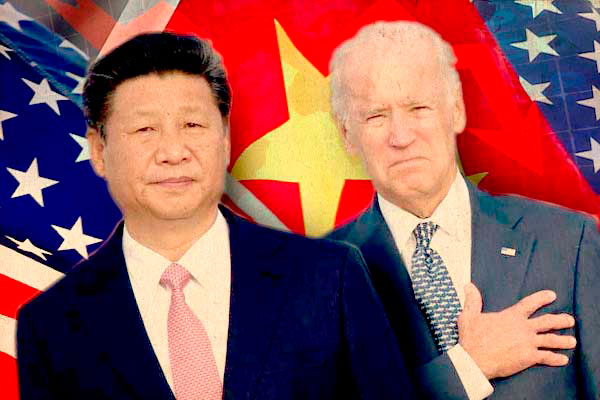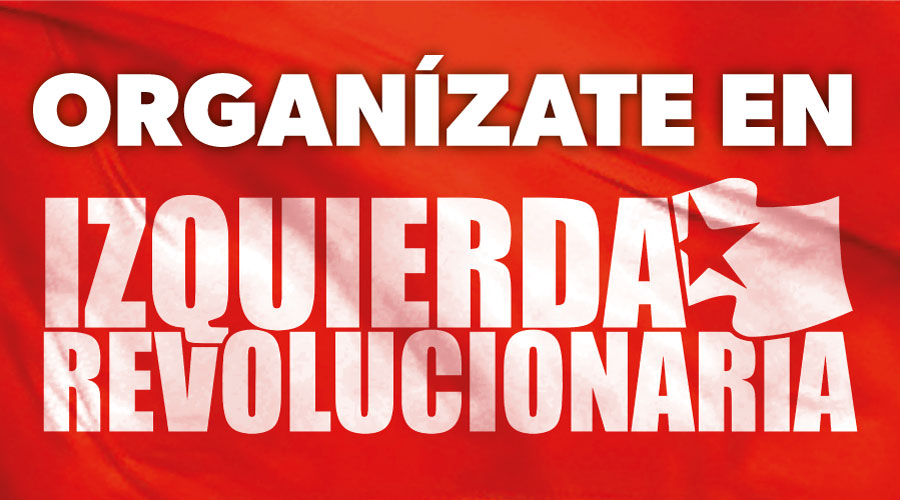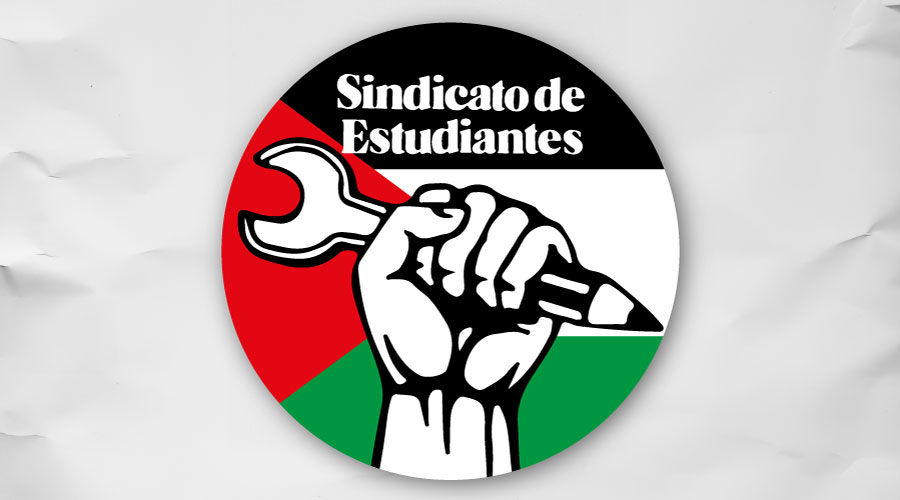Below we publish an edited version of the first part of our thesis document, passed by our Political Conference on the 5th and 6th of December.
Perspectives for the world economy
The devastating crisis eroding capitalism is not the fruit of a hard-to-control pandemic. Its causes have been brewing since the last decade and are the result of the dictatorship of finance capital and its prescription of cuts and austerity. The tremendous inequality, the disappearance of the welfare networks brought about by working-class struggles, and a political and social polarisation only comparable to the one in the 1930’s, are the response to the qualitative leap in the internal contradictions of capitalism and its loss of internal balance.
The capitalist institutions and governments look at the data with astonishment and have no idea what path the events will take. They are flabbergasted and uncertain. In spite of the solid support provided by the leaders of social-democracy and the new reformist left formations, they fear that new revolutionary explosions will overflow the retention dams which they have erected. This is the reason for their endless calls to “national unity”, made whilst they carefully sharpen the battle axes.
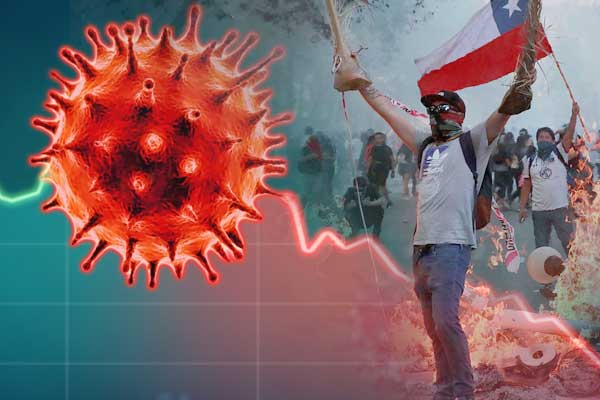
We are not exaggerating. Chile, Bolivia, Peru, Costa Rica, Guatemala, Colombia, Thailand, Indonesia, India, Western Sahara, Belarus, Poland, France, USA… in all these nations we have witnessed the rising of popular and revolutionary uprisings, general strikes and mass mobilisations that have toppled governments, thwarted imperialism plans or placed in check the agenda of racism, cuts and austerity. And all this in the middle of a pandemic.
The objective situation has become very complex for the bourgeoisie. In other historical conditions, an economic crisis of this magnitude would lead to open war between the capitalist powers. Although such an idea is ruled out due to the risk of mutual destruction, a ruthless struggle for control of the market, raw materials, technology and geopolitical influence will sharpen and deepen, bringing inevitable regional military conflicts which will be even more devastating.
The IMF has made catastrophic predictions in its October report for 2020. US GDP will fall 4.3%; Germany 6%; France 9.8%; United Kingdom 9.8%; Spanish State 12.%; and the Eurozone 8.3%. In Asia, Japan’s GDP will contract 5.3% and India 10.3%. It will be even more pronounced in Africa: Nigeria’s GDP will retract by 4% and South AFrica’s by 8.3%. In Latin America, the GDP will collapse 8.1% in 2020, and the number of people in poverty will rise from 185 to 231 millions, whilst people in extreme poverty will go up from 68 to 96 millions (UNECLAC)!
According to the United Nations Conference on Trade and Development, world scale direct foreign investment in the first 6 months of 2020 has been reduced by half, in relation to the first 6 months of 2019, but although the contraction in USA and Europe was 61% and 29% respectively, China’s was only 4%. China has attracted foreign investments of around 76 000 million dollars during this time, whilst the US has attracted investments of 51 000 millions dollars.
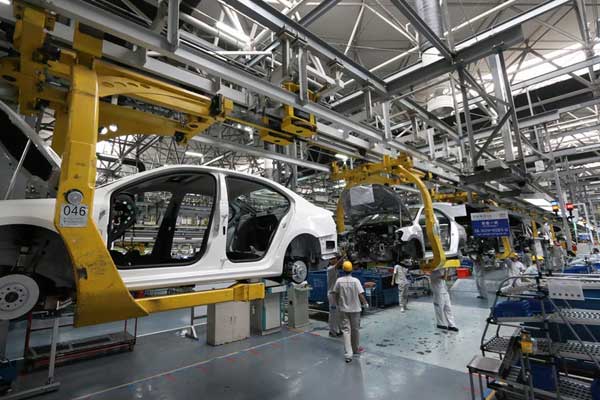
China has been more resilient to the crisis, showing the advantages it has accumulated in relation to the US and Europe. This is a transcendental political and economical event, marking an historical dynamic that can only be compared with the transformation process undergone by the US between the First and the end of the Second World War to become the hegemonic capitalist power.
If there are few doubts that Chinese State capitalism will not be able to escape from the general recessive tendencies, even less when it is a net exporting power, it will be able to defend itself more efficiently because it has a highly competitive productive apparatus, and it can rely in currency reserves and trade superavits much superior than all other nations. The US suffered harshly from the 1929 crack, but that did not stop its economy from being strengthened in comparison to its competitors at the time.
According to official data, the Chinese economy has grown about 4.9% in the third quarter of the year, the only of the greatest powers to do so. According to the IMF's October report, China will end 2020 with 1.9% growth, with Goldman Sachs expecting a 7.5% growth in 2021.
The rebound forecast by the IMF puts a damper in the optimistic vision propagated in March that there would be a V recover. The US will grow by about 3.1%, Germany 4.2%, France around 6%, Italy 5.2%, UK 5.9%, Spanish Sate 7.2%, Japan 2.3% and India 8.8%- Growth rates that will not compensate for this year’s collapse.
The most important part is that these forecasts bypass variables that even the IMF recognises as possible, such as a new wave of the pandemic or the collapse of the financial sector and markets due to the giant speculative bubble created in the last few years. This is mentioned in their October report: “The uncertainty around the basic projection is unusually sharp. This prognostic is based on economic and public health factors which are inherently hard to predict… Another source of uncertainty is the magnitude of the effects caused by the weakness in demand, the decreasing of tourism and remittances. A third group of factors relates with the confidence of finance markets and its implications in capital’s international flow.”
The retraction of activity in all sectors, especially pronounced in industry and services, adds itself to the fall in trade exchanges which, according to a World Trade Organisation (WTO) forecast may fall between 13 and 32% in 2020. All these elements together give us a notion of the magnitude of the overproduction crisis.
The characterisation from a marxist standpoint is clear: The world economy is going through a deep depression that may last for a long time.
The accumulation mechanism in the era of capitalism decay.
The economy has precariously evaded collapse due to the massive injection of public resources. According to the IMF's report, the capitalist governments have injected more than 12 billion dollars in “bailout” plans to support big businesses, banks and monopolist concerns, This is not a small matter. If that amazingly high amount of capital had been earmarked for productive investment, to support jobs, increase in wages, the resolution of the most urgent social needs- starting with a massive investment in public health, education and housing… it’s undeniable that we would be talking about very different perspectives.
The public and private debts have become a metastasis which corrodes the economic organism: In 2019 it reached a 253, 6 billion dollar high, the same as 322% of the world’s GDP. In total, the majority is owed by companies, businesses and financial institutions (around 222%), debt that is being bought by the Central Banks and Reserves through Quantitative Easing (EQ) and financed by the “bailout” plans which have been enacted. This is the perverse accumulation mechanism in place during this period of world recession.
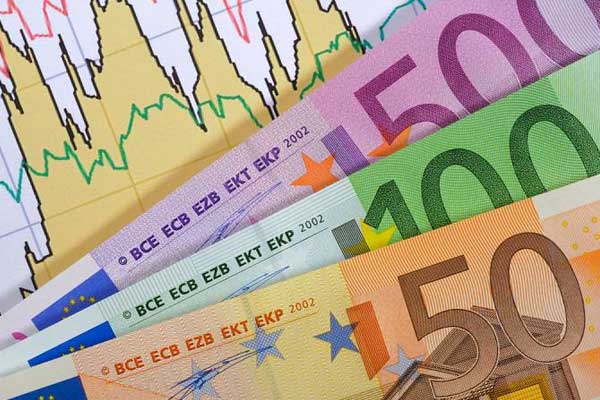
The IMF also underlines that the public debt of the most advanced economies can surpass 124.7% of the world’s GDP in 2021, more than the record peak post-WW2 in 1946, which reached around 124.1%.
In the last two decades the world’s public debt has doubled, due to the intensification of the financialization of the economy and the bubble burst after 2008’s Great Recession. But only in the last 9 months, that increase has shot up 20 percent.
The facts keep proving the marxist analysis of the capitalist crisis and its organic nature. When serious economic collapses are generated, the State will always protect the national interests of its bourgeoisie, assuming its role as a tool of class domination. It might nationalise the losses, but it will never socialise profits.
Keynesians of every stripe keep longing for the State to play a “progressive” role in a more “social” distribution of wealth and resources, in order to mitigate the consequences of the crisis. But these desires do not match with the objective dynamic of the accumulation process.
Even if the bourgeoisie accepted considerable state spending in postwar Europe, even nationalising productive sectors where the amount of fixed capital spent was too expensive, we are far from that dynamic now. That orientation was determined for paramount political reasons: They had to stop the advance of the USSR in Europe and maoist China in Asia, as well as to halt the revolutionary crisis that was exploding in France, Italy and other countries.
When the European bourgeoisie was forced to concede to the reforms that led to the welfare state, it was due to a massive destruction of productive forces and to the support of US imperialism to rebuild them. This was due to the strategic considerations already mentioned, as a response to the strengthening of the stalinist block.
North American Imperialism emerged from WW2 has the indisputable capitalist power: dollar became the main currency accepted by all nations, they had the biggest gold reserves, it was the creditor of the world, and its economic apparatus benefited from the technological applications developed by the military industry, which led to formidable progress in many branches of industries. How is this similar to what we see now? Only asking the question is enough to find the answer.
The eccentric idea of a new Marshall Plan, which has been recycled by socialdemocratic leaders at the beginning of the crisis, was quickly discarded. But the democratic doctors of capitalism cannot resist these prescriptions and even some international institutions with a known imperialist path adhere to it. IMF economists are calling for the need to increase taxes on the rich and improve the welfare services. It’s the fear of new revolutionary outbreaks that is behind this advice.
But why don’t they happen? Why do the Tobin taxes, the Google taxes, the tax reforms to fight against fraud, the laws against offshore heavens, end up being mere declarations that turn to be more and more useless? The reason is clear: the crisis has led to new forms of capitalist accumulation and to the extraordinary enrichment of a plutocracy that rules the word with a iron heel and sees itself as invincible.
This dictatorship of finance capital dictates the policy and economy of all continents. They don’t care that environmental destruction is more unsustainable each day, being a real threat against humanity; that misery, poverty, unemployment and inequality increase exponentially. The bourgeois moral lies in its balance sheet. Only the socialist revolution can stop this madness.
Finance capital, strengthened by the injection of liquidity by the central banks, has become even more pervasive and parasitic, without any barrier to stop it. And this process is happening in parallel to a concentration and monopolisation of capital to a degree never before seen in the history of capitalism. Nature magazine, in a recent study about climate change, confirmed the magnitude to which natural resources and industries have been hoarded in a very small amount of big monopolies.

The State, instead of reining it in, feeds this dynamic, confirming Lenin’s words “.... in the epoch of finance capital, the State and private monopolies interweave in a whole; both of them are nothing more than distinct links in the imperialist struggle sustained by the great monopolies fighting for their division and share of the whole world.”
The capital accumulation basing itself in the market of debt and financial engineering has surpassed any reasonable limit. That is why the COVID outbreak has been so explosive and simultaneous around the world. The pandemic is the accident that revealed the need: the world economy is paying the price of the huge profit rates accumulated by finance capital since the Great Recession of 2008, profit made through speculation and public injections of liquidity. If in the past period the overproduction crisis was not solved, but productive investment and job creation remained mediocre, now the Recession has come back much more ruthless and destructive.
This madness expands with the assent of public institutions. Some examples: In one of the emissions from the European Central Bank (ECB) last August, the private banks requested loans that amounted to more than 1.3 billion euros. What were the conditions you ask? 0.5% of negative interest, which means that the central bank paid them to ask for money, and a 0.5% discount if the banks showed that those credits were destined to businesses and families in its own countries. It is a circular transaction.
Since 2015 the ECB has increased its balance in “money creation” through EQ operations, now reaching 6.2 billion euros, almost 50% of the Eurozone GDP. But we haven’t even seen a small inflation trend accompanying such an increase in liquidity. It is obvious why: demand is completely suppressed. What ECB is really trying to do is not to stimulate the real economy, but buy sovereign debt, bank, mortgage and corporate debt, most of it uncollectable, in exchange for real live money.
Another very significant example is the North American economy. We have already analysed the magnitude of its GDP collapse. Other data corroborates it: although unemployment has reversed and the unemployment rate is now around 7.9%, the global amount of jobs destroyed has not been compensated. If between March and April 20.8 million jobs have disappeared, only half have been recovered so far, at a rhythm which has seen a huge deceleration since September (600 000 new jobs, compared with 4.8 million in June and 2.7 million in May).
In the meantime we see the S&P index, which comprises the stock value of the 500 biggest north american companies, finishing the second quarter with the biggest profit rate since 1998- 20%. The Dow Jones, index of the 30 biggest corporations, has increased 18%, the best result since 1987. And the tech companies listed in the Nasdaq have also shot up in the second quarter, reaching 31%, a two decades high.
The biggest companies by market share: Apple, Amazon, Alphabet (owner of Google), Microsoft and Facebook, which have a combined value of 8 billion dollars, have played a major part in this madness. According to the Wall Street Journal, its share value has been kept at an average of 44 times more than its expected profits. Apple’s capitalisation in August has made more than two billion dollars, getting more than a billion since March and the outbreak of the pandemic.
The lion’s share of these profits has been acquired through the massive rebuying of actions by their own companies, the famous repo (right to buy a stock share by a previously agreed price at any moment) and where capital injected by the States plays a key role (that is where, in the last instance, most of the liquidity geyser of the central banks ended in- in the coffers of the big companies).
Class War
“The accumulation of wealth in one pole is, at the same time, the accumulation of misery, suffering at work, slavery, ignorance, brutality and mental degradation in the opposite pole”. Marx’s declaration has been completely and irrefutably proven in the present day.

The last Oxfam yearly report shows that the richest 1% of people have twice the wealth than 6900 million people combined; 2153 multimillionaires more than 4600 million people; and that the 22 most powerful men in the world have more wealth than all women in Africa. There was never such extreme inequality before- throughout the whole of human history.
But this inequality is not an accident. The exploitation and extortion of the labour force is one of the characteristics of this phase of capitalist decay. The generalised precarity and low wages have led to the appearance, in the most advanced countries, of the worker that, in spite of working one or two jobs, is in the threshold of poverty or in poverty itself, without any way of compensating for unexpected expenses or unable to reach the end of the month.
According to the ILO, in the beginning of 2020 more than 700 million workers earned less than 3,2 euros every day, and from those 265 million earned less than 1,90 euros. 2000 million were informally employed and 55% had no social coverage or protection whatsoever. Obviously these figures have increased exponentially since the pandemic outbreak.
The amount of people dead due to COVID 19- more than 1.5 millions around the world; of people infected- more than 60 million- and its profound health consequences give an idea of the current apocalypse. The economic and health factors catalyse political decisions of extreme importance and vice-versa- the measures taken by the ruling class have profound effects on the material basis.
Only through the dialectical method, meaning the analysis of social phenomena in its evolution, clearing what is apparent and extraneous to is essential motor elements, which means the state of productive forces and class struggle, will we correctly approach perspectives and delineate the priorities in our intervention.
What is the determining factor in the current political situation? Without a doubt it is the fear of revolution and the accumulated power of the working class both in the so called developed countries as well as in the ex-colonial countries, a power without precedents in world history. And this fear is what explains the bourgeoisie relentless call for “national unity”, which is still its key strategy. Lenin wrote in the “Collapse of the Second International”- “A government never needs more both the agreement of all parties of the ruling class and the “pacific” submission of the oppressed classes to this rule than in war times.” And now we live through in a fierce class struggle.
How is clear and known, both the old and the new parliamentary left have positively answered the call of the bourgeoisie. In spite of this, the strategy of “national unity” faces a number of hindrances to be put in practice. We don’t mean that it won’t happen thanks to reformists, but the general decay of capitalism and the crisis of bourgeois democracy are being reinforced and not dampened, and, essentially, will undermine the programme of national unity on a medium term.
The examples that testify to this are varied and with different dimensions. In Latin America, the bourgeoisie and imperialism have relentlessly reaped failures. The recent elections in Bolivia, where MAS has returned an overwhelming absolute majority, is one. In spite of Evo Morales fleeing and the submission of his parliamentary group, and in spite of the savage state repression and the lies from the mainstream media, the masses have given a hard blow to bourgeois reaction and to imperialism.
In Chile they have invested enormous energies into disrupting the revolutionary uprising started in October of 2019- and thanks to the collaboration of the Communist Party of Chile and the biggest trade union confederation- CUT, which have “critically” supported the idea of a Constitutional Convention agreed by Piñera and the Chilean Socialist Party, the regime was able to navigate through the most critical moments. Nevertheless, the situation is everything but stable. The resounding victory of the Yes on the 25th of October referendum shows the enormous strength of the movement and how electoral maneuvers may delay but cannot stop it from coming to the fore.
The revolutionary process can reignite the spark with renewed strength and force, pushed by the profound social and economic crisis which will not stop battering society. The aspirations and demands of the masses cannot wait that the so-called “constitutional convention” finish its task in 2022.
These examples underline one of the ideas that we have pushed forward in the last few years: the correlation of forces is so favourable to the working class that imperialism and the ruling class fail time and again when they try to impose coups as solutions, a fact that differentiates this period from the 1970’s and the success that the ruling class had in imposing bloody military dictatorships.
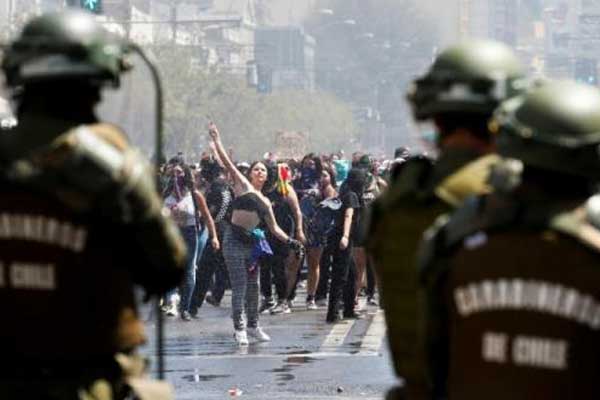
Of course, we do not mean that the bourgeoisie has given up on this option. Furthermore, the trend of using authoritarian measures in order to stop the left turn and neutralise the upsurge in class struggle is being manifested with intensity. But it has limits. The fundamental factor that allows the bourgeoisie to regain time and again the direction of events is not counterrevolutionary violence, but the absence of a marxist party with a mass base that can present itself as an alternative for power.
The US at a turning point
Trump has been defeated in the most polarised and high profile elections in US history. The results show that the biggest capitalist power of the planet is suffering from a political wound that does not stop bleeding. Trump resists yes, but in the end he has not been able to cope with the popular uprising that set the country on fire from one end to the other by denouncing the racist police violence, nor with a health, social and economic catastrophe that certifies the end of the American dream.
The results give many keys to understand the present and future of the class struggle in the USA. First, the consolidation of a massive electoral base for Trumpism and what it represents, which will inevitably condition the coming events and put strong pressure on the future Democratic government. Second, the proof that there is a majority of the population willing to fight the extreme right-wing populist reaction and the causes that feed it, and which transcends the elections of 3 November.
Biden may claim to be the most voted candidate in history, but Trump's defeat has been achieved despite him and the entire Democratic establishment. The lessons of these years have not passed in vain, and the advance in the consciousness of millions of oppressed people is a mobilising factor of the first order.
The fundamental cause for the defeat of the new yorker millionaire has to be found in the extraordinary mobilisation that has multiplied since his inauguration. The massive marches of the women who received his mandate, the struggles of the youth against anti-immigration legislation, climate change or the use of weapons and, above all, a social rebellion against the racist and supremacist violence of the police apparatus that has unified in class lines tens of millions of white, African-American, Latino and young workers from all communities, have had a clear translation in the ballot boxes. It is the irruption of the masses that has pushed Trump out of the presidency, and not the mediocre campaign of a candidate like Biden unable to undermine the social base of his opponent.
More than 16 million Americans who did not go to the polls in the 2016 elections have done so this time, bringing the turnout to around 67% of the census. Biden's candidacy received 81,271,132 votes, 51.38% of the total and 306 electoral votes. Compared to the 2016 results (65,853,514) this represents an increase of more than 23.4% and more than 15 million votes. Trump obtained 74,209,298 ballots, 46.91% of the total and 232 electoral votes. In relation to 2016 (62,984,828), it increased its vote by 17.8 points and more than 11 million votes.
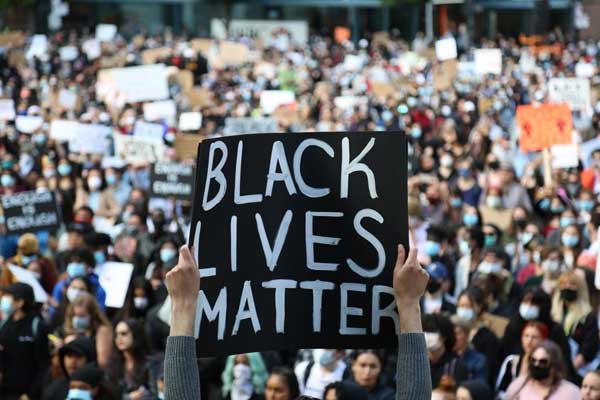
The candidate of the green party, Howie Hawkins, who was supported by different organisations of the socialist left, only got 399,100 votes, 0.25%, 75% less than in the 2016 elections (1,457,218) and his worst record since 2008.
These results must be seen through the prism of undemocratic electoral legislation, which includes an electoral college that decides on the election of the President (not direct universal suffrage), and which can also suppress the rights of millions of voters, as is the case in many states with the majority of people in prison and a considerable proportion of those released.
If we point out the highlights of the campaign, Trump did not tire of insisting on his most inflammatory anti-Socialist claims. Never had the words socialist, extreme left, communism been uttered more... by a president who was running for re-election. Trump accused Biden of being the same as Castro and Chávez, used the slogan "against socialism vote Trump" in many cities, called on his followers to organise armed resistance against the extreme left, and finally challenged the recount within hours of it starting.
None of this is casual. Trump, as these choices have confirmed, is not an adventurer without perspective, nor is he a loose cannonball who acts on impulses that require professional attention. His discourse reflects the decomposition of American society and the desperation of wide sectors of the petty bourgeoisie who have lost the certainties of the past and are prey to a hysterical fear of an uncertain future. These sectors, which have traditionally had a formidable social weight, do not renounce a way of life that has earned them great privileges, and look with horror at the escalation of the class struggle, the growth of the left and the influence of the ideas of socialism among the youth and the workers. These strata have declared war on the present state of affairs and Trump has provided them with a flag to fight for.
This social magma also involves backward sectors of the workers, demobilized and deeply demoralized by deindustrialization and chronic unemployment, low wages and the loss of a status that provided them with a stability that has vanished forever. Absolutely sceptical of what the democratic establishment offers them, they have maintained their support for Trump under the illusion that the economic situation would improve.
This bloc, inflamed by counter-revolutionary despair and resentment, has shown its hand. They are really a threat for the democratic, economic and social rights of the workers, youth and all oppressed people who are suffering from a lacerating inequality. But this bloc, which has been fought on the streets in an all-out struggle for four years, is finally defeated despite an electoral system monopolised by the two big parties of the ruling class.
The masses who have risen up against Trump have had no choice but to beat him at the ballot box, and even more so after Bernie Sanders, whom millions of people supported in the Democratic primary, withdrew and capitulated to the party apparatus.
Yes, the struggling masses have voted for Biden with their nose covered to defeat Trump, but they have not put any trust in his policies. The majority knew perfectly well that the Democratic candidate was part of the problem, not of the solution.
It is more than evident that Biden's campaign has not generated any illusions. He has been a lackluster opponent who has walked away from his subservience to big corporations, refusing to include in his agenda any of the proposals that Bernie Sanders defended during the primaries. This is why Trump has been able to keep his electoral power intact or even strengthen it in some states.
Revolutionary elements
According to polls, 97% of voters in 2016 did so again four years later for the same party. The US press reported that 82% of those who voted for Biden thought that "Trump will probably transform his country into a dictatorship" and 90% of Trump's voters that the Democrats wanted to turn it into "a socialist country".
The extreme polarisation at the polls reflects much more than "just" support for two candidates in the system. Such a reading, after all that has happened in these four years, besides being sectarian, masks the reality: the masses have not stopped looking for an independent path in their action.
The elections are one part of the set of factors that measure the temperature of the conflict between the classes, and taking into account the undemocratic character of the US electoral framework and the absence of a workers' party, the real correlation of forces and the enormous potential to change society can only be reflected in a very distorted way.
Lenin posed the question in this way: "A Marxist has no doubt that revolution is impossible without a revolutionary situation; but not every revolutionary situation leads to a revolution. What are, in general terms, the symptoms of a revolutionary situation? We will certainly not make a mistake if we point out these three main symptoms: 1) The impossibility for the dominant classes to maintain their domination unchanged (...) For the revolution to break out, it is not usually enough that 'those at the bottom do not want it', but it is also necessary that 'those at the top' cannot continue to live as they have done up to now. 2) An unusual worsening of the misery and suffering of the oppressed classes. 3) A considerable intensification, for these reasons, of the activity of the masses, who in times of 'peace' allow themselves to be peacefully plundered, but who in turbulent times are pushed, both by the whole situation of crisis and by those 'above', into independent historical action.
Has the class struggle in the USA shown revolutionary features? The answer is yes. The catastrophe that very large sectors of the African-American and white workers and also the youth of the impoverished middle classes are going through explains the character of the social explosion that we have experienced. The popular uprising that exploded after George Floyd's death, with all that it can have of spontaneity, has been incubating during years of galloping inequality, attacks on democratic rights, police brutality and systemic racism. The movement has unified by directly targeting the economic oligarchy, the political establishment and the state apparatus.
This social chasm is the fuel that has inflamed the class struggle and propelled the left turn. The dynamics accelerated four years ago, when Bernie Sanders' candidacy and his speech for a "political revolution" against the 1% of Wall Street burst into view, and was affirmed with the election of candidates to the left of the Democratic apparatus. What is really amazing, and few have highlighted it, is that despite Sanders' capitulation the movement continued to create new channels of expression. The uprising against racist police violence is much more than a one-off phenomenon. It represents that historical action independent from the masses to which Lenin referred to.
Trump and the sector of the bourgeoisie that supports him identified correctly the essence of the events, and therefore unleashed their open hostility against the promoters of a struggle that pushes strongly the consciousness towards socialist ideas. Faced with the policy of the White House, the apparatus of the Democratic Party tried by all means to channel the rebellion towards the electoral terrain by emptying it of revolutionary and class content. On this basis, it launched its candidate Joe Biden, and also got the support of Sanders to surround him with a credibility that he lacks. But they did not deceive millions of workers and young people, who know perfectly well that the Democratic establishment shares the same view as the Republicans on fundamental issues, whether in the trade war, in rescuing the banks and Wall Street or in their non-existent social policy. Their vote was not in favor of Biden, but against Trump.
It would be a mistake to make a mechanical and reductionist reading of the election results. It should be remembered that just a few months ago, the President locked himself in the White House bunker and called for the shooting of the demonstrators by declaring a curfew. What happened then? Despite the police violence and the deployment of the National Guard, the movement did not back down, quite the contrary. According to estimates published in The New York Times, more than 16 million people participated in the demonstrations that took place without interruption in hundreds of cities in this huge country. There is nothing like it in recent history!
Can the strength of this movement be compared to the street protests of the ultra-right, the proud boys and the other groups that Trump has relentlessly pulled? Of course we don't want to underestimate the dangers posed by these organizations. But they are much weaker than the masses in action, especially if they are based on the programme of revolutionary socialism.
It is precisely this threat, perceived by millions of young people, women, immigrants, African Americans and working people, that explains why, despite being a mediocre candidate and being completely disconnected from the radical aspirations that this struggle has brought to the fore, Biden has achieved the biggest presidential vote in history (and Trump the biggest of a defeated candidate).
The big distortion in the USA is that there is no independent working class party, and that space was historically held captive by the Democrats. Although they are a bourgeois party, they always took care of their relations with the bureaucracy of the trade unions and the community and civil rights movement in order to domesticate them and assimilate them to the class collaboration policy. Having said that, the dialectic of the process of consciousness raising and of the workers' organisation does not end here.
The extraordinary emergence of Black Lives Matter and the candidacy of Bernie Sanders, or the growth of the Democratic Socialists of America (DSA) which is approaching 70,000 members, shows that the conditions for creating this workers' party have matured. The defeat of Trump, far from slowing down this process, will feed it.
Trumpism
As we have pointed out, polarisation is an objective process that is expressed in two directions. The Democratic Party leadership was confident that they would benefit from the inertia generated by the extraordinary mobilisations against racism, and from Trump's terrifying handling of the pandemic. As with Hillary Clinton four years ago, they expected a big blue wave. But Biden's election campaign, far from hurting the Republican candidate, has continued to give him support.
Trump resisted in many of the depressed areas of the famous "Rust Belt" of the Midwest, which is mostly working-class. It is true that Biden has regained Michigan, Wisconsin and Pennsylvania by the smallest amount, but he is moving away from the large Democratic majorities of the past and continues to give up Ohio to the Republicans.
Some analysts have pointed out that Trump has the best results of a Republican candidate among the African-American population, but the growth of his support is limited and it would be an exaggeration to consider it a background phenomenon. Examples to the contrary are overwhelmingly numerous and relevant, such as the overwhelming majority against Trump in Clayton, the African-American suburb of Atlanta that has been instrumental in giving the Democrats their first victory in Georgia in 24 years.
There has also been much speculation about Latino votes, but the most serious analyses show a split along class lines. In Florida the polls predicted a close battle between the two candidates, but the balance tipped decisively for Trump when in Miami-Dade County the nearly 30-point difference achieved by Hillary Clinton in 2016 narrowed for Biden to just over 7. According to the NBC News exit poll, Trump won a majority of the Cuban, Venezuelan and Colombian votes in Miami after a campaign focused on denouncing Biden as a socialist. Even this fact cannot hide the fact that Florida voters have approved a resolution to raise the minimum wage to $15 an hour.
The vote of the most humble Latino working class, employed in domestic work, hospitality or large farms, explains the historic turnaround in Arizona and the significant Republican setback in Texas, although it is true that the Democratic candidate has lost some ground in some Latino majority counties in New Mexico and California in relation to the great differences achieved by Clinton in 2016.
The bottom line, as Edison Research's exit polls pointed out, is that Trump's electoral base has barely changed since 2016. It gets its biggest support from white men, over 65, with high incomes - over $100,000 a year - in rural areas, who declare themselves Catholic, Protestant or Evangelical. This middle class sector has understood perfectly its message during the pandemic: the economy is above the life and health of the workers. For this reason, although the number of victims of the coronavirus exceeds 240,000 and more than 5 million people are infected, the sources of income of these sectors have weighed decisively in their vote.
Millions of petty bourgeois, and in the USA there are many, have turned to the extreme right terrified by the change of era they are living through, because they feel that their privileges are threatened by a social mobilisation that achieves conquests like the minimum wage of 15 dollars an hour, builds trade unions and social organisations that are combative against the reactionary, macho and racist ideology that has always prevailed among the small and medium owners. Trump consolidates a firm base among these affluent strata, who are called upon to fight back in these elections as if it was their life, and among sectors of the white working class in the interior of the country hit by the crisis.

Presenting itself both as a guarantee of survival in the face of the internal and external threat, against China, America first, it mobilised considerable social reserves, but has been unable to put a stop to the decline of American capitalism, bring the factories home or break the Chinese technological and productive power. Its demagogy is directed against the political establishment or the media, but the financial oligarchy has become much richer under its rule.
Bourgeois Democracy in the Spotlight
The Republican candidate has played with fire by stirring up an extremely reactionary discourse and consciously spurring on polarisation. But this is merely the expression of an objective phenomenon, which reflects a deep political change. The US bourgeoisie is divided on how to protect its interests, on how best to ensure its class domination. Now that Biden has triumphed, even within the Republicans, voices are being raised asking for respect for the institutions and the return to an understanding that can "sew the wounds of a divided country".
Trump continues to denounce the illegitimate nature of the recount and promises to go to court to challenge the result. But it does not look like he will succeed in his maneuvers. Even sectors that have been with him in these four years giving pabulum to all his occurrences and propping up his excesses, such as the Fox TV network, have rejected the accusations of fraud, although it is clear that the US bourgeoisie does not make any mistake with this recourse as it was shown in the elections stolen from Al Gore in 2000, when the courts stopped the recount in Florida and gave the victory to George W. Bush. Now the context is very different. If they support Trump in his denunciation and paralyse the functioning of the electoral system, the crisis that bourgeois democracy is suffering in the USA would enter a phase of uncontrolled chaos. The masses would not accept such a thing. The mobilisations unleashed after the assassination of George Floyd could turn pale. The movement would return to the stage, not to sing congratulations to Biden, but to face Trump and all that he represents with an extraordinary determination. It would be a second round in the streets that very few want.
From the point of view of the short-term interests of the ruling class, it is necessary to return to normality, to achieve stability and "consensus" in order to face an unpredictable period, given the dimensions of the world crisis. Within the Republican Party, personalities have already emerged accusing the fear of reawakening a social tsunami. When three television channels cut off the President's live speech, they did so following very precise instructions: calling into question the electoral system, the institutions and "American-style democracy" does not favor Wall Street!
The voice of the big capitalists represented by the democratic apparatus is trying to weather the storm and calm down at a fast pace, sending out the most conciliatory messages: our democracy is strong, our institutions work. The problem for them is that the Republican Party has merged with Trump, or rather, Trumpism has become the social and electoral base of the Republican Party and, far from going into decline, it has shown its consistency.
The immediate future, therefore, looks complicated for the ruling class. All the factors that have given rise to this extreme polarisation have not only disappeared, they are going to intensify. The divisions and social tension will not evaporate because they express the deep crisis of the form of capitalist domination which is striking the first world power, but which is also spreading to other nations. The bourgeoisie is struggling to keep control of the situation, when the elements on which it has based itself to do so peacefully for many decades are seriously questioned and do not serve as in the past. It is the fruit of the decay of a sick and gangrenous system.
For a workers' party with a socialist programme
The legislature for the most voted candidate in history will be much more like a nightmare than a bed of roses.
When Barack Obama took office in 2008, at the height of the financial crisis, there was enormous confidence in him. At that time he had overtaken Republican John McCain by more than 10 million votes (69.5 million as opposed to 59.9 million), but his eight years in the White House were tremendously frustrated by the reversal of the major reforms he had announced, especially those relating to universal public health care and the fight against systemic racism. He was re-elected in the 2012 elections, but was left with nearly 4 million votes.
The Obama administration set the stage for two major events: Bernie Sanders' impressive campaign during the Democratic primary in 2016 and his "political revolution against 1% of Wall Street", and leaving a poisonous legacy that led candidate Hillary Clinton to lose the election to Trump.
Things are now very different from 2008. The new world recession will have more calamitous effects on the US economy, and will make the war with China even more acute. The destruction of public services in the US, poverty and inequality is much greater than it was twelve years ago. Biden has neither the credibility nor the popularity of Obama. He is a decrepit leader who has been placed next to a figure like Kamala Harris in order to prepare her for the presidential elections of 2024 and maintain the nod to the African-American community. Both intend to continue with the capitalist policies by avoiding new outbursts and attempting to sew up the torn social seams, but that is more than unlikely in the current circumstances.
Will Biden substantially change the current state of affairs? Of course not. The COVID19 pandemic, in addition to costing more American deaths than World War II and Vietnam combined, has left unusual images for the world's richest country, such as hunger queues or burials in public park trenches. But Biden looked the other way and criticized Trump for his health management with a small mouth, without questioning the objective bases that have triggered this slaughter. Certainly the impoverishment of the working class and large sections of the middle classes did not begin with Trump, it is a legacy passed on by previous Democratic and Republican administrations.
Biden will continue to help the big monopolies with full force, approving the "rescue" plans and the purchase of corporate debt that is necessary to sustain their bottom line, just as Obama did. And he will completely forget about the millions that have been given to him for the presidency. The future tenant of the White House has made it clear what his priorities will be: he will encourage the trade war with China by groping economic nationalism, just like Trump, to divert attention from the serious domestic problems that are accumulating. He will not carry out any purging or defunding of the racist police, and will not touch the multi-million dollar private health care business unless forced to by mass struggle. Nor will it end a university student debt of over $1.5 trillion, or the degradation of public education or the lack of decent and affordable housing. As for racism, it will be limited to new toasts to the sun, but it will keep workers and African-American youth under the same conditions of inequality.
So the question on the table now is how to move forward after Trump's defeat. The turn to the left in broad layers of US society is out of the question, but the absence of political organisation of the working class and youth is an obstacle for this potential for transformation to become a mass anti-capitalist alternative.
Experience has already shown that the Democratic Party has not been and will not be the tool we need for this battle. It is an instrument of the bourgeoisie, it is at its service and therefore it does not serve to defeat social cuts, racism or police violence. To think that by working within the Democratic Party it is possible to accumulate the necessary forces to raise a workers' party is a reactionary utopia. The lessons of Bernie Sanders' candidacy have been conclusive on this issue. The point is that, unlike Sanders, who has spoiled the enormous support he garnered by refusing to build an independent organisation, the organised left can indeed take consistent steps forward to bring together millions of workers and youth. The task is not easy, but defeating Trump was not easy either.
This strategy needs to abandon parliamentary cretinism and understand the limitations of the electoral arena. A party of the workers and youth will never give up participating in local or general elections, fighting to use them as a platform for propaganda and organisation. But it is not a question of creating an electoral machine but of building a party for the class struggle, rooted in the neighbourhoods, companies, factories and study centers, in the labour and trade union movement, in neighbourhood and community mobilisations, in anti-racist organisations, in the feminist movement..., and to do so by defending a class, socialist and internationalist programme to respond to, and also to win, the aspirations of millions.
Such an alternative could take away from Trump's demagogic discourse sectors of the middle classes and the working class that today are in the wrong trenches out of pure desperation and because nobody offers them a way to solve their undeferrable problems. The conditions to go through this way are evident thanks to the struggle of these years. The movement in support of Bernie Sanders made clear that such an alternative was perfectly possible, and the same shows the growth in militancy and influence of DSA.
Biden's advisers have already thrown themselves into a grave to proclaim a new era of "national unity", and will have a powerful echo in the media, including sectors of more traditional Republicanism. But the harsh reality of the crisis will make this lure clear and continue to stir the conscience of millions, who will make further progress in their political conclusions.
Nothing is automatic in the class struggle. The USA has entered a turbulent period, and the task of the currents and organisations claiming to be on the revolutionary left is not to cry the lost opportunities, nor to adopt sectarian messages and approaches that will alienate them from the activists. It is necessary to establish a common language with the millions who have mobilised on the streets and at the ballot boxes, to raise their understanding of the tasks of the moment and the need to forge a revolutionary Marxist organisation.
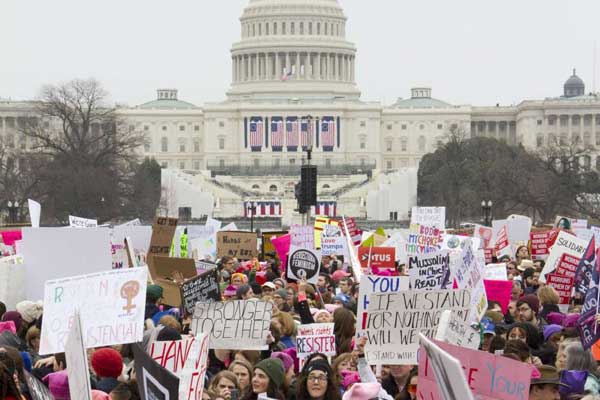
Everything that happens in the world's leading power has immediate consequences for the rest of the world. Trump's defeat sends very bad news to Bolsonaro in Brazil, Salvini in Italy, Johnson in Britain, Alternative for Germany and the ultra-right-wing Vox. But the threat of Trumpism is still alive and may rebound even more strongly in the future, as it feeds on the organic crisis of capitalism.
The most important task of our class in this period is to prepare ourselves for this battle, and to do this is to build the revolutionary alternative that the oppressed people of the USA and the whole world need to win.
The struggle for global hegemony
The depth of the recession has been underpinned by decisions and contradictions that emerged long before the pandemic. Reflecting this dynamic, International Relations (IR), as we knew it thirty years ago (after the collapse of Stalinism), has been blown up. Stable blocks have been broken and new alliances are being woven. The war in Afghanistan has ended in a humiliating defeat for US imperialism, which has had to forge a precarious agreement with the Taliban. The same can be said of Iraq, which last year was the scene of a formidable movement in Baghdad and other major cities against the government and its Iranian mentors, which was harshly repressed but which placed social and class issues in the foreground.
Nor can Iran's progress as a regional power following the defeat of the Islamic state in Syria conceal the fact that the mullahs' regime is based on a powder keg. The great workers' struggles of recent months are a measure of the fury and enormous discontent against the reactionary oligarchy that rules the country as a theocratic dictatorship, and the recession could increase them extraordinarily. The mullahs are being questioned in other scenarios, such as Lebanon, where the revolution has toppled successive presidents and governments, undermining the influence of Amal and Hezbollah (Iran's allies). Something similar occurred in Sudan, although the revolutionary process has been diverted by the strategy of the opposition, which has capitulated to the military junta in order to reach an agreement on "democratic transition".
The same reasons explain the deep political crisis in Israel, where the Zionist bourgeoisie has lost a lot of ground to mobilize the population behind its expansionist and militarist goals, and a new generation of workers and youth is taking to the streets challenging the policies of the ruling elite. The government crisis, which three consecutive elections have not been able to solve, shows the instability that has been installed in the Israeli society, which is unprecedented in the last thirty years. The agreement between the White House and Netanyahu for the establishment of relations between Israel and the United Arab Emirates seeks to strengthen the imperialist bloc in the area, which has been badly damaged and cracked by the successful incursions of Iran, Turkey, China and Russia.
The shock of the class struggle is not limited to these areas. Asia has also entered a new phase of instability: the general strike in Indonesia or the big mobilisations of young people and workers that hit Thailand are a break with the previous period, marked by the strong growth of their economies, which are today facing a very hard crisis.
It is evident that the failure of Islamic fundamentalism has given way to much more class-based forms of struggle. Of course, the absence of the subjective factor is behind all the distortions and perversions adopted by the revolutionary processes in the ex-colonial world. But the question to be highlighted is where the fundamental tendencies are pointing, and it is undeniable that the space for the revolutionary left and the Marxist programme is the most propitious in decades.
Inter-imperialist tensions have intensified in all areas of strategic importance. In Turkey, Erdogan is facing serious difficulties. Faced with the rise of the class struggle and an alarming recession, he is trying to exacerbate Grand Turk chauvinism through all kinds of military maneuvers abroad and increased repression at home. The Bonapartist character of his regime has been accentuated to the extreme. Its relative success in Syria, where it controls part of its northern strip and fights the Kurdish militias, or vis-à-vis the EU, from which it has obtained billions of euros for its role as border guard against refugees, has led it to overestimate its forces.
In the Mediterranean, it is facing Greece over gas and oil reserves. It has also fueled the war in the Caucasus between Azerbaijan's army against Armenia and the Republic of Artsaj over the region of Nagorno-Karabakh. A movement to increase its influence in the region (through control of Azerbaijan) and weaken Russian influence (which supports Armenia), but which has not achieved the expected results. If we cite the case of Turkey, it is because it illustrates very well the new phase of balkanisation and shifts that are shaking up the 21st century IR.
Realignments and ruptures between the big blocks have become commonplace as an expression of the serious economic recession, the decline of the American and European imperialism, and the extreme social and political polarisation that is going around the world.

Britain's exit from the EU is a consequence of this general process, and Germany's desperate attempts to keep Europe united under its leadership, more of the same. The German bourgeoisie cannot compete on the world market if it does not defend itself with the tariff barrier that the EU represents against the USA and China. But the future of European unity on the current basis is not assured, and is conditioned by the great battle that the two giants are currently engaged in.
In numerous materials we have explained that Trump's economic nationalism and the tariff war against China do not arise from a blue sky. They are the ripe fruit of the desperation of the American bourgeoisie. But as the facts are showing, with these recipes they will not solve anything and will worsen even more the situation of the American economy.
Capitalism has created an international division of labour and a world market from which no national economy can be uncoupled. Economic autarky and nationalism is a reactionary dream as it became clear in the 1930s. Behind it, moreover, lies the most aggressive of imperialisms.
The economic war is exploding because of the unbearable contradictions of capitalism in its stage of senile decay and, if it deepens, it will increase production costs in the USA, China and Europe, with a strong impact on markets that are absolutely interdependent. It happened after the crash of 1929, and it is already happening on an extended scale. Just to point out a few facts: 77% of US imports from China are semi-finished products used to produce goods in American industries. The same is true of China, which produces 75% of the world's smartphones and 90% of its computers, but where 87% of its electronics and 60% of its machinery are manufactured by foreign capital companies, many of them from the United States. The internationalisation of production chains is not a whim; it corresponds to the innate tendency of the productive forces to overcome the straitjacket of the national state and are the essential source of profit for the large corporations.
When Trump calls on US firms to repatriate their facilities in China, it clashes with the objective dynamics of capitalism. Didn't US multinationals amass stratospheric profits from industrial relocation to China during the 1990s and 2000s? To fulfil Trump's wishes would mean a huge outlay of fixed capital and an increase in production and wage costs. But they have to do something, and in fact they are doing it: plundering US public resources, cutting social spending to the bone, speculating more than ever on the stock market and brutally reducing the wages of the US working class in the interests of improving competitiveness.
Many commentators are talking about a new "Cold War". But the comparison is not correct. There is a radical difference from the Cold War of the second half of the 20th century: the former USSR was never the economic powerhouse that China is, and the two largest economies in the world were not as financially and productively interconnected as they are now.
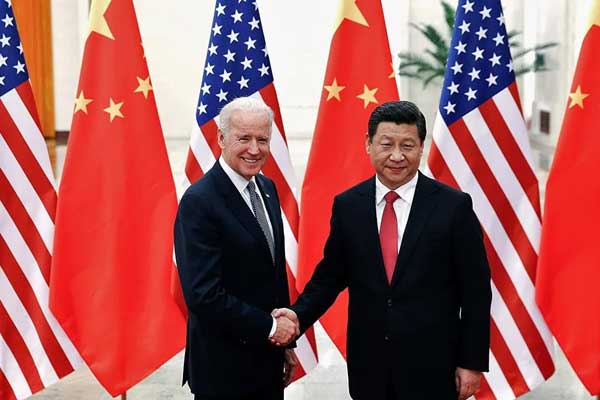
The truth is that Trump's measures have failed. His tariff policy has not led to a reduction in the deficit with China, which has grown again from $28.4 billion in June 2020 to $31.6 billion in July, to $163.3 billion in the first seven months of the year. As a report by the New York Federal Reserve pointed out, it has been US companies that have "borne practically all the costs" of these new tariffs, which has reduced profits and investment.
No US administration has prevented China's economic muscle from being further strengthened. In fact, the US bourgeoisie has contributed more than anyone else to its development, and now pays the consequences. China is already the second largest economy in the world with a GDP (in current dollars) of more than 14 trillion (17.9% of the world GDP), according to the estimates of JP Morgan. It has overtaken the euro zone, which stands at 13.4 trillion (17.1 per cent of world GDP), and is closing the gap on the United States, with a GDP of 21.3 million dollars (27.3 per cent of world GDP). By 2018 China had become the leading export power with 12.8 percent of the global share, followed by the USA (8.5 percent) and Germany (8 percent). It has also consolidated its position as the second largest recipient of Foreign Direct Investment, around 10% worldwide, only behind the USA.
The special character of Chinese state capitalism and its political regime, a Bonapartist dictatorship, has enabled it to weather the effects of the Great Recession much better than its main rivals. Relying on the weight of its state industry and a largely state-controlled bank, and thanks to its huge economic reserves, thanks to decades of trade surpluses, it has been able to carry out more efficient centralisation and allocation of resources than any other major power. But these competitive advantages, evidenced in its ability to react to the pandemic, do not prevent China from continuing to be subject to the laws and contradictions of the world market and to the crisis of overproduction.
Nor is it a minor matter that the Chinese regime, thanks to the progress of the productive forces over the past three decades, the growing urbanisation of the territory, the emergence of a new middle class and the possibility of assimilating a huge amount of labour from the countryside into the large factories, has been able to maintain a fairly stable support base. But this situation could also change as a result of the evolution of the global economic depression.
China has become a new superpower that threatens America's supremacy in all fields. This phenomenon bears similarities to America's progress in the last quarter of the 19th century and the first quarter of the 20th century with respect to England. In those fifty years, the US economy advanced with seven-league boots and its imperialist expansion was definitively consolidated, putting an end to British hegemony. Now, the process is being even more accelerated.

According to the latest survey by Fortune magazine, China was among the world's 500 largest companies with 89 firms in 2013, while in 2019 it was 119. The US has been relegated to second place with 99, although it does have 22 among the top 50 (China has only two, Huawei in fifth place and Alibaba in 28th), and these almost one hundred companies totalled 8.7 billion dollars compared to 7.9 for Chinese companies.
In any event, what needs to be estimated is the geometric progression of Chinese capitalism in just three decades. According to data from the European Commission, in 2019 China was the world's leading user of patents, and is the country with the second largest number of companies investing in R&D (507) after the USA (769), although in terms of paid-up capital it is third, behind Japan and the USA. The speed of progress of China's corporate structure and its technological leadership is a matter of concern, and rightly so, to the American and European imperialists. In 2019, Huawei displaced Apple from the second to the third place in the world in mobile phone sales, reaching 16% of the market share compared to 13% for Apple. Today 5 of the 10 biggest internet and telephone companies are Chinese, while in 2009 all of them were American.
Chinese imperialism not only openly challenges the US, in Europe they try to establish a bridgehead through Serbia, Greece and Italy, where Chinese capital is making strategic acquisitions. The EU is warning about these movements and trying to restrict them with legal bans and new tariffs.
Penetration in Latin America is unprecedented, and its political influence is being felt by thwarting some of the most notorious maneuvers of US imperialism, as in the case of Venezuela (in a decade it has lent the Maduro government some 60 billion euros). A few months ago, China also signed an agreement with Iran to invest 400 billion dollars in energy and infrastructure over the next 25 years. It has also conquered Africa: it is the leading investor in terms of capital volume, around 72 billion dollars between 2014 and 2018, the biggest creditor with figures that can be around 145 billion dollars, and the leading trade partner.
Of course, the US still holds the lead in crucial areas such as the foreign exchange market: the US dollar accounts for 88 percent of all trade in the world. It also has the stock markets with the highest turnover: the New York Stock Exchange had a capitalisation of 23 billion dollars at the end of 2019 and the Nasdaq had 11 billion. It is followed by the Tokyo stock exchange with 5.7 billion and London with 5 billion. But if we take the Chinese stock exchanges, Hong Kong, Shanghai and Shenzhen together, their total capitalisation is around 10.5 trillion. As in other records, progress is rapid and sustained.
The data of the imperialist expansion of China is filling the specialized magazines and also the popular press. What has been seen in this pandemic has increased China's prestige and influence not only among the ruling circles of many countries, but also among the people. Therefore, the response of the American ruling class cannot wait, and there is a clear unity of opinion on this issue.
The escalation of confrontations between the US and the Asian giant has not ceased to increase. The popular uprising in Hong Kong has been one of them. The fact that the "democratic" opposition, led by pro-Western elements, has managed to sustain the struggle on the streets for a year, often overwhelmed by the initiative of the youth, has not managed to make a dent in the Xi Jinping regime, which is essentially maintaining its agenda for Hong Kong.
Added to this clash is the conflict in the South China Sea, where Washington regards Beijing's claims to sovereignty, which have resulted in various clashes with the fleets of Vietnam and the Philippines, as illegal. Also significant are China's conflicts with India and Australia, two of the US's priority allies in the area, which are losing out. China has invested some $60 billion in Pakistani infrastructures as part of the so-called China-Pakistan economic corridor, which in turn is part of the new Silk Road. The old US alliance with Pakistan is very deteriorated, and Trump has turned strongly to Modi's government in India to try to maintain his influence on the continent.
The American bourgeoisie is also very concerned about the advance of the military power of the Asian giant. China's arms expenditure accounts for at least 14 percent of the world total, $261.082 billion annually (the US's is much higher for the time being, $731.735 billion). What is striking is that the US's allies perceive the seriousness of this escalation and are taking measures. The Australian prime minister, Scott Morrison, has announced military expenditure of $186 billion for the coming decade, an increase of 40 per cent.
But these tensions have not prevented the 10 Southeast Asian countries that make up the ASEAN-the anti-communist alliance promoted by the US in the 1960s-plus Japan, South Korea, Australia and New Zealand from joining China in the recently formed Comprehensive Regional Economic Partnership (RCEP). This partnership is set to lead to the largest free trade area in the world, covering just over 30% of the world's population and 29% of world GDP. This agreement is undoubtedly a political success for the Chinese government, which has managed to lay the foundations not only for a progressive reduction in US influence in the area but also for opening up a path towards an agreement with Chile and Peru, two firm US allies in the languishing Trans-Pacific Economic Cooperation Agreement (TTP) promoted by Obama and paralysed by Trump.
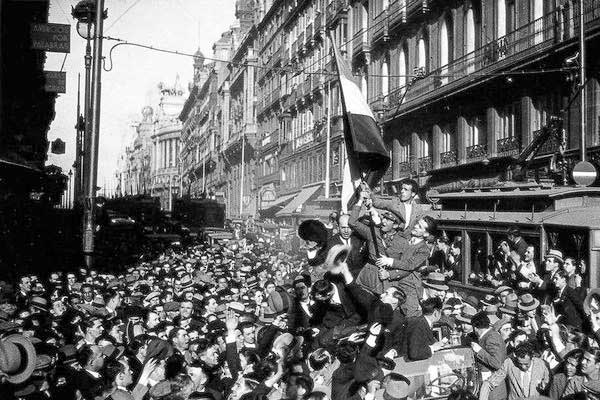
When we look at the dynamics of the inter-imperialist confrontation and the sudden changes in the IR, we can draw a historical comparison with the inter-war period of the 20th century. A period of revolution and counter-revolution in which the working class moved energetically towards the seizure of power, but was cruelly betrayed by the social-democratic and Stalinist apparatus. This failure allowed the triumph of fascism and finally opened the doors for a devastating imperialist war. As we have analysed, the perspective of a military conflict of these dimensions is ruled out in the short term, but some of the most radical and threatening political manifestations of that period are emerging in all their rawness. The task for which we are preparing is therefore of the same historical significance and cannot be postponed.






